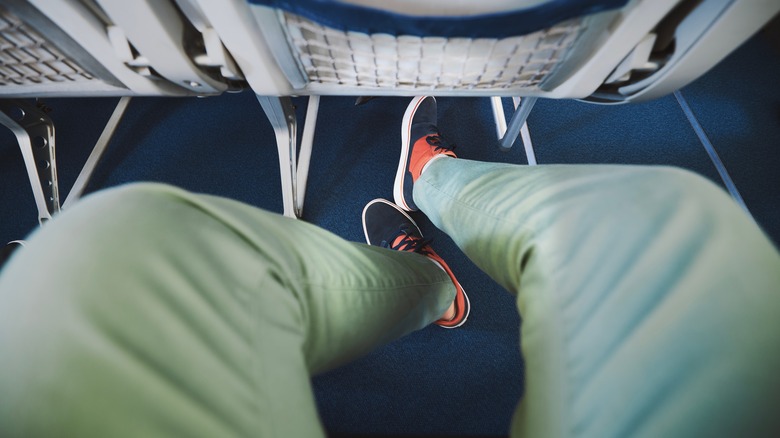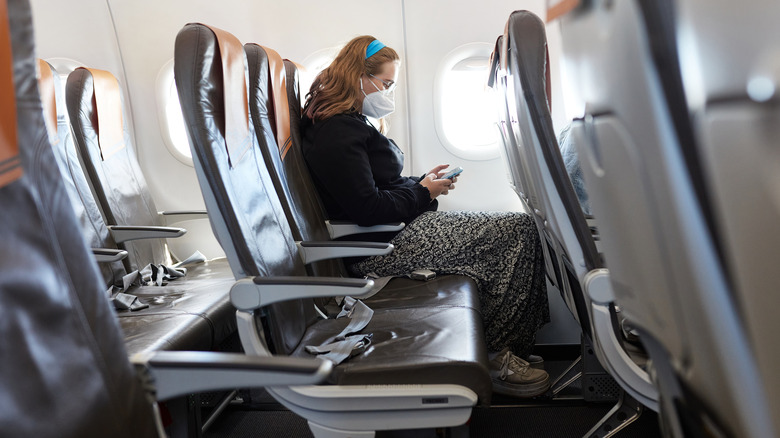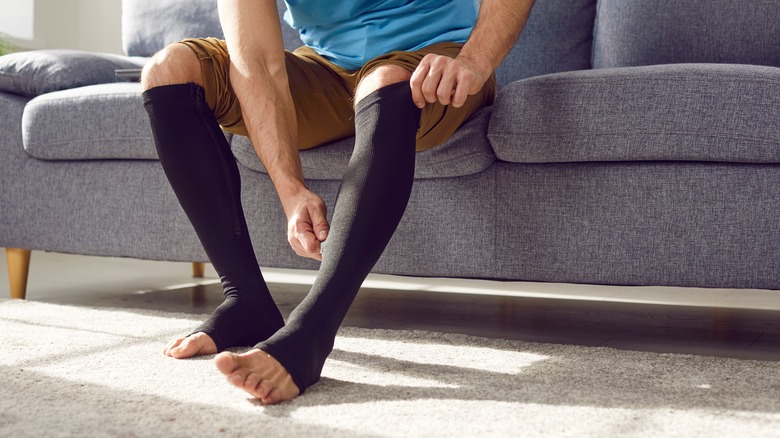Here's Why Your Ankles Swell Up During A Flight
Whether you've traveled from New York to Tokyo, Milwaukee to Aruba, or Tampa to Timbuktu, you've probably found that flying can be hard on your body. You may have noticed your shoes and socks feel a little tight towards the end of the journey. This type of swelling is actually pretty common. According to a 2021 study from Jornal Vascular Brasileiro, about 97% of people who take a flight longer than seven hours will experience some swelling.
In most situations, swelling results from not being able to get up and move around often while in the air; while uncomfortable, it typically does not pose health risks. However, there is a slim chance that the swelling will occur due to a more serious condition, especially if you spend more than 12 hours in the air and have a high risk of blood clots. Just like frequent fliers have tricks to reduce bloating on airplanes, you should know how to tell the difference between regular swelling and dangerous ankle swelling and how to reduce it for your own safety and comfort.
How to determine if ankle swelling is a problem
If you feel like those cramped airplane seats are hurting you, you're probably right. When you sit in one place, not moving for a long period of time, you put a lot of pressure on the veins in your legs. The medical name for the common kind of swelling that occurs on flights is edema. Edema refers to having more fluid than usual in your body tissue, which can happen for many, many reasons, from eating a big salty meal to serious medical conditions like liver damage. Edema in your ankles during long flights is common; while it can feel uncomfortable, it is basically harmless.
In rare cases, swelling occurs while flying because of a blood clot condition known as deep vein thrombosis (DVT). If you're not prone to blood clots already and your flight isn't particularly long, you probably aren't at risk of DVT. Usually, the swelling in your ankles won't take too long to fade once you deplane and walk around the airport. If it doesn't go away on its own, you should check in with a doctor and ensure it's nothing more serious. You should be especially alert if you experience swelling in only one leg.
How to prevent ankle swelling on long flights
Like sunburns and dry skin, swollen feet and ankles are an unfortunate side effect of long-haul air journies. Experienced travelers know self-care practices for flights, like using moisturizer and wearing sunscreen while traveling by plane. Similarly, you can take steps to prevent suddenly having your shoes feel like they're several sizes too small. If you can, try to get a seat with a little legroom to prop your feet up on your suitcase at times. On extended flights, get up and walk around periodically. An aisle seat will make this easy, but don't let social awkwardness keep you from taking care of yourself — your fellow fliers will understand that you can't remain seated for the full period.
You may also want to wear compression socks or stockings, which apply pressure to your feet and ankles. Not only will this help prevent uncomfortable swelling, but it will also lower your risk of developing blood clots. You can get packs containing several pairs of compression socks for less than $20, making them a worthwhile investment if you have a lengthy plane ride in your future.


